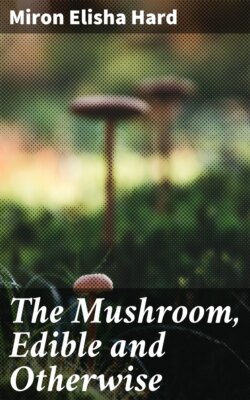Читать книгу The Mushroom, Edible and Otherwise - Miron Elisha Hard - Страница 48
На сайте Литреса книга снята с продажи.
Lepiota cepæstipes. Sow.
ОглавлениеTable of Contents
The Onion Stemmed Lepiota. Edible.
Figure 37.—Lepiota cepæstipes. Pileus thin, white or yellowish.
Cepæstipes is from cepa, an onion and stipes, a stem, Pileus is thin at first ovate, then bell-shaped or expanded, umbonate, soon adorned with numerous minute brownish scales, which are often granular or mealy, folded into lines on the margin, white or yellow, the umbo darker.
The gills are thin, close, free, white, becoming dingy with age or drying.
The stem is rather long, tapering toward the apex, generally enlarged in the middle or near the base, hollow. The ring is thin and subpersistent. The spores are subelliptical, with a single nucleus, 8–10×5–8µ.
The plants often cespitose, two to four inches high. Pileus is one to two inches broad. It is found in rich ground and decomposing vegetable matter. It is also found in graperies and conservatories. Peck.
This plant derives its specific name from the resemblance of its stem to that of the seed-stalk of an onion. One form has a yellow or yellowish cap, while the other has a white or fair cap. It seems to delight to grow in well rotted sawdust piles and hot houses. The specimens represented in Figure 37 were collected in Cleveland and photographed by Prof. H. C. Beardslee.
